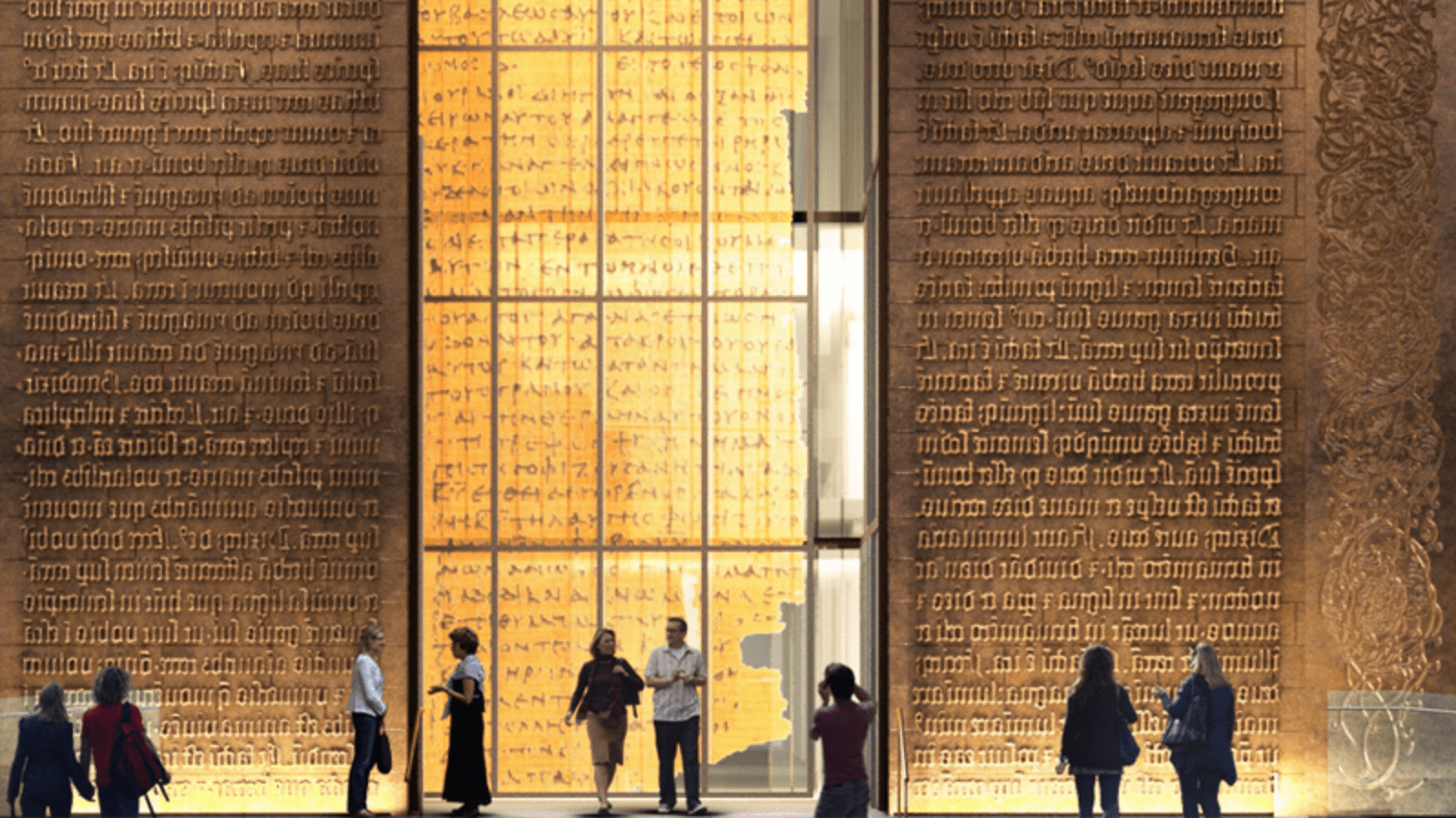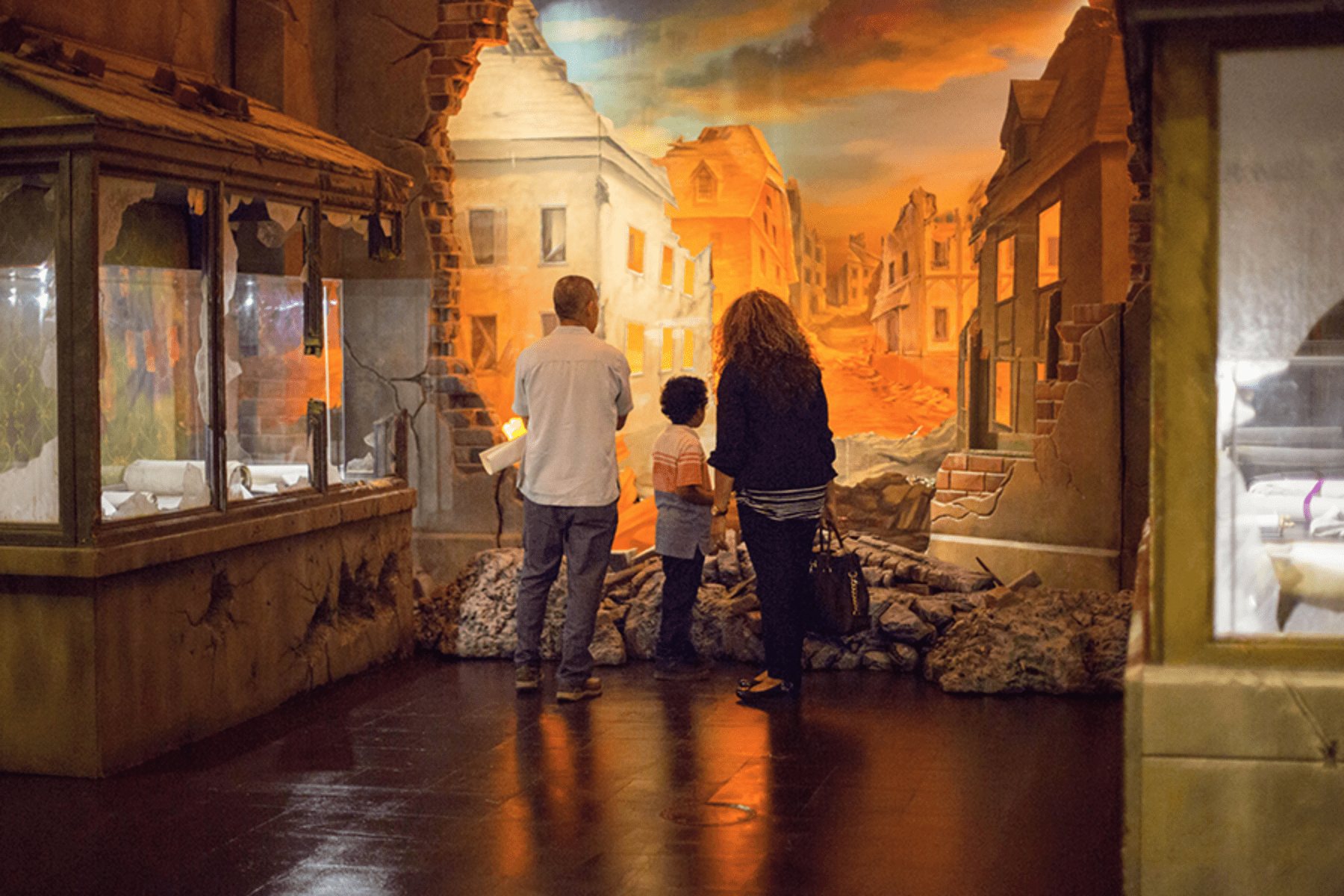Museum of biblical proportions set to open
Eight floors of interactive displays, rare tablets, manuscripts and collapsing columns
When Museum of the Bible opens its doors on November 17, just three blocks from the US Capitol building in Washington DC, guests will enter through two towering, 12-metre-tall gates, each weighing more than 12 tonnes.
Made of bronze, the so-called “Gutenberg Gates”, created by artist Larry Kirkland, bear the first 30 verses of the Bible in Latin as found in the Gutenberg Bible, the first major work created using the printing press. However, the text is in reverse, as in a printing plate, so that visitors can create souvenir rubbings.
It’s been estimated that it would take 72 hours to read every placard, see every artefact and experience every activity.
The giant gates serve as a dramatic introduction to a museum of biblical proportions. Over eight floors, covering 40,000 square metres, visitors are encouraged to engage with the Bible through its extensive collection of rare tablets, scrolls, manuscripts and printed books. It’s been estimated that it would take 72 hours to read every placard, see every artefact and experience every activity.

Artists impression of the Gutenberg Gates Museum of the Bible
Ahead of next month’s opening, the museum has released an ambitious, cinematic short film that spans thousands of years of biblical history in only three minutes.
Accompanied by an original soundtrack, the video races through a depiction of the Jewish tradition of oral transmission of the biblical narrative, to Roman-occupied Judea as the Essenes transcribed the Old Testament onto The Dead Sea Scrolls; the printing of the Gutenberg Bible; Luther nailing 95 Theses to the door of the Wittenberg Castle church; Michelangelo painting the Sistine Chapel ceiling; Galileo making ground-breaking discoveries about the solar system; the Puritans sailing for Plymouth Rock; the American Revolutionary War and the signing of the US Declaration of Independence; Abraham Lincoln’s Emancipation Proclamation; and Martin Luther King’s I Have A Dream speech from the steps of the Lincoln Memorial in August 1963.
Exhibits include vivid walk-through re-creations of the ancient world, a motion ride that sprays water at you and a garden of biblical plants.
The museum, which is one of the biggest in a city of mega-museums, communicates the history and influence of the Bible through cutting-edge technology and immersive experiences. Exhibits include vivid walk-through re-creations of the ancient world, one of the world’s largest private collections of Torahs, a motion ride that sprays water at you, a garden of biblical plants, arcade games about the “courage” of biblical figures, and a “children’s experience” room where young Samsons can push columns and seem to make them collapse.

One of the exhibits at the museum of the Bible Museum of the Bible
Comments Mark Roosa, Dean of Libraries, Pepperdine University: “The extraordinary artefacts in the Museum Collections offer viewers a fascinating glimpse into early Christianity. The extensive collection of rare tablets, scrolls, manuscripts and printed books brings history alive in an awe-inspiring way.”

One of the exhibits examines the history of the printing press and the Bible Museum of the Bible
Created at an estimated cost of $US500 million, the museum located close to the seat of US power is the brainchild of Christian philanthropist Steve Green, the president of arts and crafts chain Hobby Lobby, whose lightning-fast acquisition of artefacts has created controversy. Earlier this month, the museum hosted a scholarly panel discussion about the rigorous process used to create content displayed in the museum and answer questions about its collection practices, some of which have been challenged.
The board of directors has also engaged a nationally recognised authority on cultural heritage preservation, attorney Thomas Kline, to advise them on cultural property, governance and museum operations.
A day after its official opening the museum will showcase its state-of-the-art World Stage Theater with the Broadway musical Amazing Grace. The musical will have an eight-week run there ahead of a national tour. It dramatises John Newton’s conversion from a brutal slave trader to the Christian author of the much-loved hymn, Amazing Grace. The 472-seat World Stage Theatre has a first-of-its-kind, digital mapping system that can surround the audience with a dynamic visual experience to augment what they see on stage.
The museum also has a research arm, called the Scholars Initiative, in which leading experts are conducting primary research on items in the collection in the fields of papyri; Aramaic, Greek, Latin, Hebrew, Egyptian and Ethiopic texts; Coptic, medieval, Middle Eastern, early Jewish and early American artefacts; illuminated manuscripts; and Christian tradition and spirituality.

The history of the bible is on display Museum of the Bible
“The innovative Green Scholars Initiative breaks new ground by offering students an opportunity to conduct original research using rare artefacts from the Green Collection. I can think of no other research programme in which, for example, a student can carry out serious research on a second-century fragment from Corinthians and publish the results,” Mark Roosa commented.


